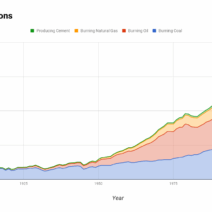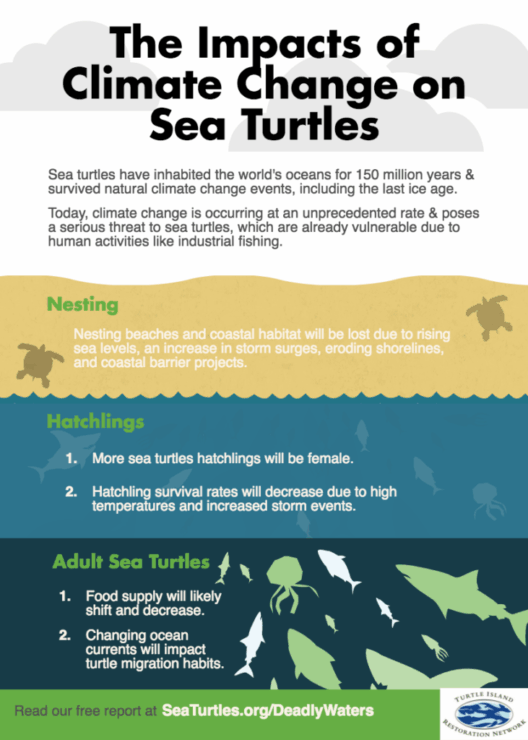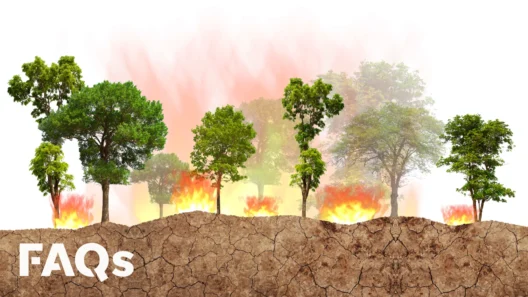Latitude serves as the cornerstone of climate variation, delineating distinct atmospheric and environmental conditions as one moves north or south from the equator. This seemingly straightforward geographical parameter unfurls a complex tapestry of climatic phenomena, influencing everything from temperature and precipitation patterns to the distribution of flora and fauna. In exploring this intricate relationship, curiosity awakens, revealing how latitude not only shapes the ecosystems we inhabit but also bears considerable implications for human activity and the broader Earth system.
To grasp the essence of how latitude influences climate, one must first understand the fundamental concept of latitude itself. Measured in degrees, latitude refers to the angular distance of a location north or south of the equator, which is designated as 0 degrees. The lines of latitude, or parallels, extend horizontally and encompass the globe up to 90 degrees north (the North Pole) and 90 degrees south (the South Pole). As one traverses these latitudinal lines, a myriad of climatic changes ensue, often categorized into three primary zones: tropical, temperate, and polar.
The tropical zone, found between 23.5 degrees north and 23.5 degrees south latitude, is characterized by its proximity to the equator. This region basks in the sun’s direct rays year-round, resulting in consistently warm temperatures and minimal seasonal fluctuations. The interplay between solar irradiation and atmospheric moisture engenders lush, verdant landscapes, typified by tropical rainforests. These ecosystems thrive owing to high humidity and frequent precipitation, fostering a remarkable biodiversity that is unparalleled elsewhere on the planet.
Moving beyond the tropical zone, the temperate zone holds dominion between 23.5 degrees and 66.5 degrees north and south latitude. Here, the climate undergoes a substantial metamorphosis. As the angle of sunlight decreases and solar intensity wanes, temperature variations become more pronounced. This zone is characterized by four distinct seasons: spring, summer, autumn, and winter. Each season presents its own climatic personality, influencing agricultural cycles, biodiversity, and human lifestyles. Temperate climates often support a diverse array of ecosystems, from deciduous forests to grasslands, reflecting the interplay of seasonal changes and varying precipitation patterns.
At latitudes beyond 66.5 degrees, one enters the polar regions, where a formidable shift in climate emerges. These zones are adorned with ice and snow, nourished by frigid temperatures and extended periods of daylight and darkness. The polar climates are marked by bitter cold and minimal precipitation, leading to the establishment of unique ecosystems. The Arctic and Antarctic regions exhibit remarkable adaptations, where flora and fauna have evolved to withstand the harsh climatic conditions. These adapted organisms, such as polar bears and tundra vegetation, reveal the resilience of life in the face of extreme environments.
Yet, latitude’s influence on climate extends far beyond geographical classifications, interweaving with other fundamental climatic drivers. One such consideration is ocean currents, which are significantly affected by the Earth’s latitudinal positioning. These currents, essential for regulating global temperatures, transport warm water from the equator towards polar regions while bringing cold water from high latitudes back toward the equator. The resulting thermal exchange moderates coastal climates, fostering fertile lands, enhancing agricultural productivity, and shaping regional weather patterns.
Equally critical is the role of elevation, often interacting intricately with latitude. As one ascends in elevation, temperatures generally decline, a phenomenon known as altitude’s effect on climate. This interplay is notably observable in mountainous regions, where a local climate can deviate substantially from the climate at lower elevations or latitudes. Consider, for example, the striking variations found in the Andes mountains, where tropical ecosystems transition into high-altitude tundras within a short geographical distance. Such contrasts exemplify how elevation deftly complements latitude in shaping local climates.
The ramifications of latitude-induced climatic variations extend well into human existence. Agriculture, for instance, thrives in regions where the climate aligns favorably with crop requirements. Mid-latitudes, marked by temperate climates, offer a plethora of farming opportunities due to a balance of moisture and sunlight. Understanding these latitudinal influences enables farmers and policymakers to make informed decisions related to crop selection, irrigation practices, and overall land management strategies.
However, it’s crucial to recognize the profound impacts of climate change on these established patterns. As global temperatures rise, the delicate balance that latitude helps to maintain becomes increasingly precarious. Shifts in climatic zones may precipitate altered precipitation patterns, threatening the ecological integrity of regions that historically thrived. The repercussions ripple throughout the food web, from altered migratory patterns of wildlife to the potential extinction of species ill-equipped to adapt. Humanity stands at a precipice, its actions determining the future trajectory of climatic conditions along varying latitudes.
In conclusion, latitude and climate coexist in a deeply interwoven relationship, shaping the Earth’s biosphere and human experience alike. The exploration of how distance from the equator influences climate unleashes an array of revelations, inviting us to reflect on our role within this complex system. As we navigate the challenges posed by climate change, an understanding of latitude’s significance becomes imperative, fostering a deeper appreciation for the intricate nuances that define our planet’s environmental legacy. The promise of a changed perspective beckons, urging us to engage with the fundamental forces that shape our world.



